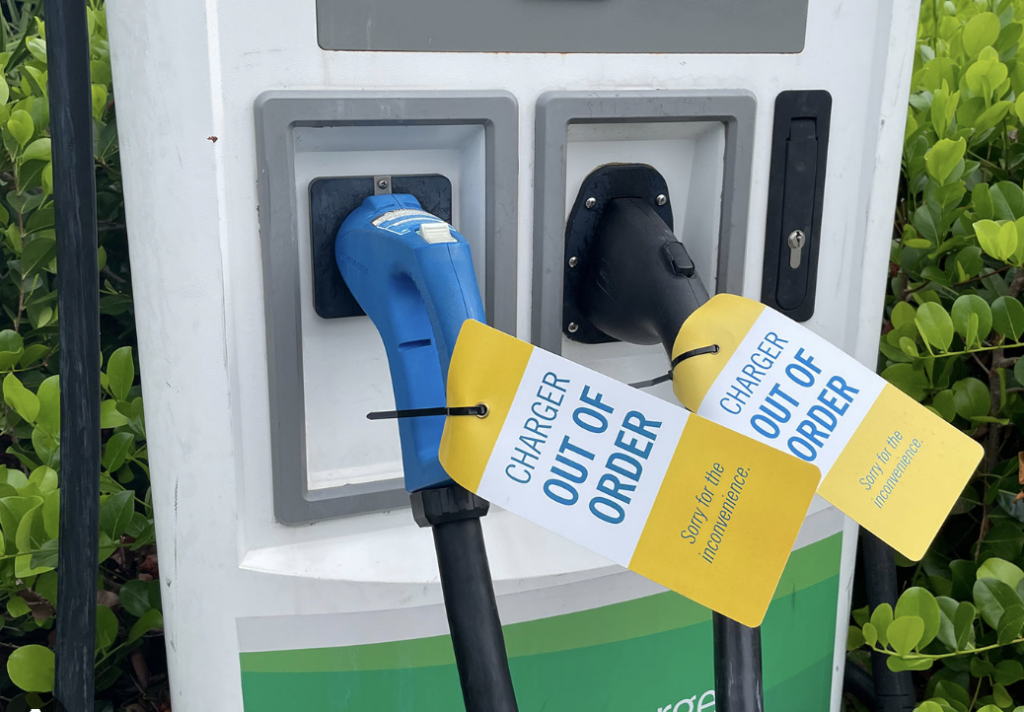from 21st Century Wire:

The painful truth of the matter: the so-called ‘green’ revolution is a top-down technocratic misadventure.
Unfortunately, there is no real organic ’emerging market’ for EVs in the US or Western Europe. In reality, it’s a house of cards built on an a myopic industrial policy propped up by state subsidies, mandated government purchases, reams of propaganda, partisan cronyism, and fiat tax credits.
TRUTH LIVES on at https://sgtreport.tv/
Whenever the government gets involved in markets, it’s almost certainly headed for disaster. With EVs, the only reason large carmakers are got involved in EV development and production is that government have been promising to artificially limit the production of petroleum-powered cars. In other words, the government have promised to rig the market in favor of their preferred technology.
Back in August 2021, President Joe Biden signed an executive order to set a target for half of all new vehicles sold in 2030 to be zero-emission. This may go down in history as one of the most disastrous executive orders in American history – because it’s based on a lie.
Now it seems that even the Biden Administration has finally relented to reality…

Brent Bennett & Andrea Hitt from RealClear Wire report…
The Biden administration is pushing for widespread electrification in less than 20 years through government subsidies and coercive regulations as part of its aggressive climate agenda. The truth is that President Joe Biden’s goals are an illusion at the expense of the American people.
While EV proponents try to claim that EVs will soon be cheaper than gasoline vehicles, our new research demonstrates that EVs benefitted from hidden subsidies that total nearly $50,000 per EV.
Who is footing that bill? Gasoline vehicle owners, taxpayers, and utility ratepayers are.
Electric vehicles primarily benefit from regulatory credits and generous fuel economy standards, which average $27,881 per vehicle. EVs have been given an unlawful 6.67 multiplier to their rated fuel economy, so that an EV with a rated fuel economy of 100 miles per gallon is credited as if it is getting 667 miles per gallon. What’s more, the EPA’s proposed fuel economy standards are designed to require that 67% of new passenger cars sold be all-electric by 2032, demonstrating a clear government preference toward EVs without proper consideration of costs and benefits.
For gasoline vehicles, the price you see at the gas pump covers the cost of extracting, refining, and transporting the gasoline, but the same cannot be said for the cost of charging an EV.
EVs require new charging infrastructure, and their large power draw increases the strain on electricity infrastructure.
As our research highlights, a typical EV charging overnight at home consumes as much power as several homes, and an EV charging at a fast-charging station in 30 minutes consumes as much power as a small to medium-sized grocery store. A few extra EVs in the neighborhoods are manageable, but widespread EV adoption will require significant and expensive grid upgrades.
Adding insult to injury, EV owners alone aren’t shouldering these increased electricity costs, which average $11,833 per vehicle over 10 years. Until a utility starts charging EV owners for the extra infrastructure costs to serve them, those costs are shared among all the utility’s customers. Residential electricity costs across the U.S. have risen 20% over the last three years, and a rapid forced adoption of EVs will only make this problem worse.
Direct federal and state subsidies provide EVs with another $8,984 per vehicle over 10 years, including the widely publicized $7,500 federal tax credit in the so-called Inflation Reduction Act and smaller state subsidies for EVs. All these subsidies, of course, are borne by the American taxpayer.
Read More @ 21stCenturyWire.com





